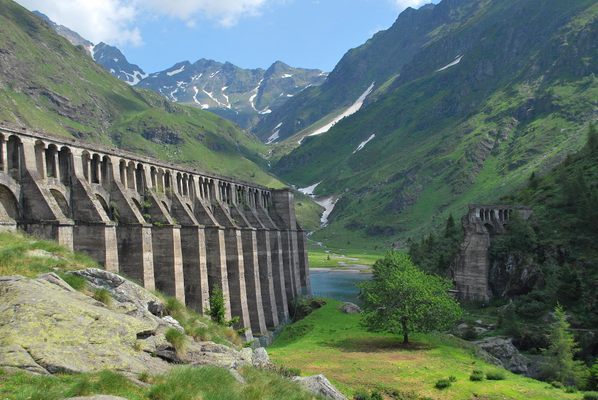About
In a growing modern nation craving for energy, as Italy was at the beginning of the 20th century, hydroelectric power was a synonym of progress, representing a victory of humankind over nature. Yet in the mountains of Bergamo province in Lombardy, that attempted feat would take a tragic turn.
Construction of a hydroelectric dam to exploit the river Gleno in the the Valle di Scalve (Scalve valley) began in 1916, but the project was immediately cursed by poor materials and poor workmanship. On top of that, due to funding problems, the plan changed from the original idea of a gravity dam to a multiple-arch dam while the work was still in progress, resulting in a mixed-type dam.
Just after its completion, heavy rains filled the reservoir, and several leaks caused concern among the inhabitants of the valley below.
Sure enough on December 1, 1923, at 7:15 in the morning, the tragedy happened. The central section collapsed, causing a mass of 4.5 million cubic meters of water to pour into the villages in the Scalve valley. The official death toll counted 356 lives lost as a result of the flood, as well as massive damage to roads, bridges and buildings.
What remains of the dam is a 160-foot-high concrete barrage with a huge, chilling laceration in its central section. The sinister ruins are a stark and surreal contrast with the stunning alpine surroundings.
Related Tags
Know Before You Go
The dam is reachable following two easy treks, one from Nona and the other from Pianezza (both fractions of Vilminore di Scalve). The one from Nona follows a moderate path, while the one from Pianezza, which goes along the path n. 411, is steeper but way more scenic, following the old road carved into the rock cliff.
Flavors of Italy: Roman Carbonara, Florentine Steak & Venetian Cocktails
Savor local cuisine across Rome, Florence & Venice.
Book NowPublished
June 27, 2018





































